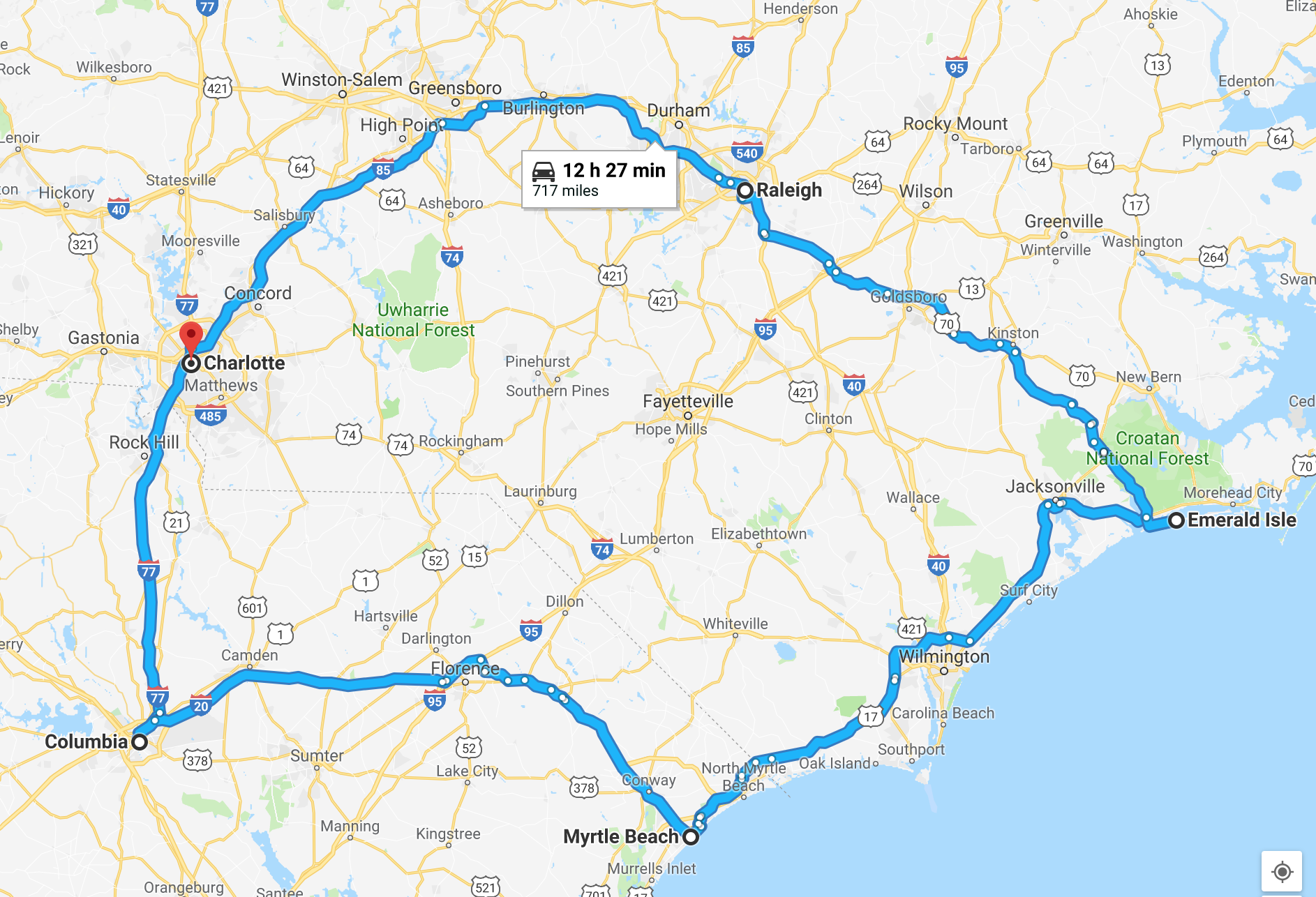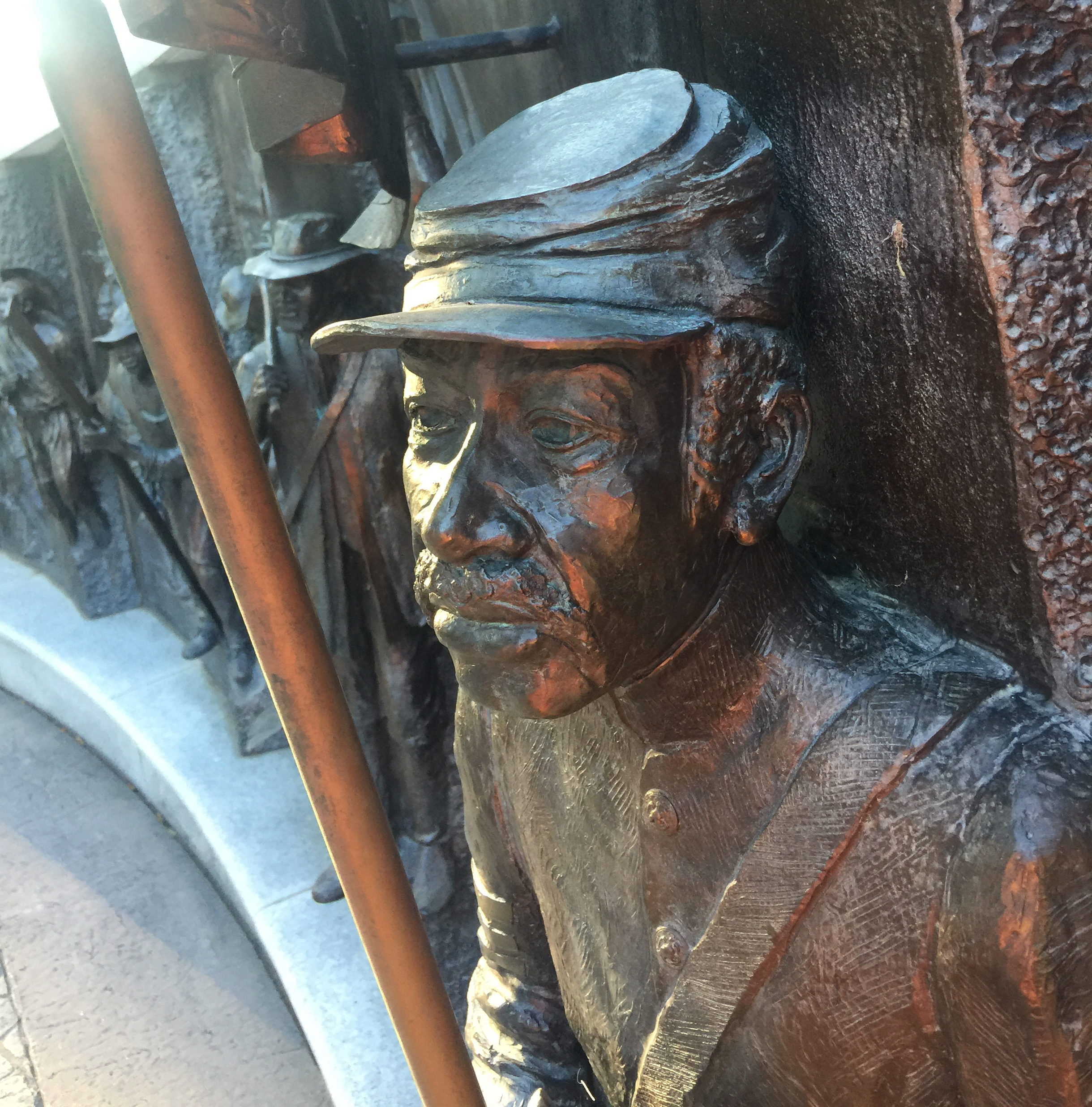Part 1
The South Carolina Liberty Bell replica
Oversold
We’ve all been there. Your flight is about to board. The gate attendant seems just now to notice it’s oversold. They get on the loudspeaker, and the auction begins. Someone is not getting on this plane — who’s it gonna be? The bidding starts at $200. You look around the gate to see who could possibly delay their vacation or business trip by a day. The price ticks up. Tensions rise. Finally, there is a taker. $600. Sold — to the lady with the good shoes. I’m married to that lady.
To clarify, Dawn’s not one of those people who buy tickets to places they don’t intend to go, only to game the system, get bumped, and rack up free trips. She travels to see family in Minnesota often, and those trips are usually not time-sensitive. So delaying a $75 flight 18 hours for a $600 credit is a deal worth taking. That $600 voucher was set to expire a month ago, so she booked a trip to the Carolinas to celebrate my birthday and check some Liberty Bells off the list.
Five days, two bells, one island
Our trip will take us on a 717-mile loop through the Carolinas. We’ll fly into Charlotte early Friday morning, head straight to Columbia to see the South Carolina bell, up to Emerald Isle for three days on the beach, then see the North Carolina bell in Raleigh on Monday before returning to Charlotte.

This quest to see all 57 of the 1950 Liberty Bell replicas has taken us to places fascinating and mundane; a park in Perth Amboy, New Jersey, the New Mexico state fairgrounds, a high school in North Dakota, a former church basement in Allentown, Pennsylvania, and a lot of state capitals, where most of the bells reside.
Capital cities are all pretty similar. There are bureaucrats in business suits, lots of lawyers’ offices, and always a Capital Grill (sometimes a Capitol Grill). The Capitol buildings are centrally located, easy to find, and surrounded by war memorials and statues of storied old statesmen — all impeccably kept and soundly ignored.

All that’s about to change as we head to the Carolinas: we’re riding into the epicenter of the debate over Confederate monuments.
On August 22, 2018, a week before our visit, the North Carolina Historical Commission presented Governor Roy Cooper their recommendation on what to do with the Capitol’s three Confederate monuments. Acknowledging the “over-representation and over-memorialization of a difficult era,” the commission recommended the monuments stay in place, along with the addition of plaques to add context and a memorial to honor African American North Carolinians.
Will time wound all heels?
Thursday, August 30, 2018 | We get about an hour’s worth of sleep on the red-eye flight from Denver to Charlotte. With many miles to travel today, we hop in the rental car and drive south to Columbia. The Capitol grounds are lush and pristine, with gently rolling hills leading up to a copper-domed neoclassical statehouse.
Not to be outdone by its northern neighbor, the South Carolina Statehouse also has three Confederate monuments, four if you count the 17-foot Strom Thurmond statue.

Born 38 years after the Civil War ended, Strom Thurmond was a larger-than-life figure who holds several impressive records. In 1954, he was the first senator ever elected as a write-in candidate. He was continually reelected for the next 46 years, switching from the Democratic to the Republican party in 1964. In 2003, at the ripe old age of 100, he retired as the oldest and longest-serving member of Congress to date.
But Thurmond is perhaps best known for staging the longest filibuster in U.S. history. 24 hours and 18 minutes. All talk, no bathroom breaks. However, it’s now widely believed he violated Senate rules by taking a bathroom break four hours into his filibuster and later urinating into a bucket held by an intern in the Senate cloakroom.
The bill he was attempting (unsuccessfully) to filibuster was the 1957 Civil Rights Act. An ardent segregationist, Thurmond’s record falls spectacularly on the wrong side of history. He fought for a version of southern culture that used the concept of states’ rights to preserve the Jim Crow status quo well into the twentieth century.
In 2003, the man who tried to deport John Lennon posthumously earned another impressive record when 78-year old Essie Mae Washington-Williams revealed herself to be the oldest secret lovechild in U.S. political history. Her mother was Carrie Butler, a 16-year old African American servant working for Thurmond’s family.
If you look closely on the side of the monument, you’ll see where the inscription “his four children” was changed to “his five children,” and Washington-Williams’s name was added.

Relatively speaking, South Carolina is slightly more progressive than its neighbor to the north when it comes to Confederate symbols. In 2000 lawmakers moved to take down the Confederate flag that had flown over the Capitol dome since the end of the Civil War — give or take 97 years. Raised in 1961 as the state’s none-too-subtle response to the Civil Rights movement, the flag was moved a few yards to fly next to one of the three Confederate monuments. It remained there until it was removed in 2015.

The 2000 legislation also called for the addition of a monument honoring African American South Carolinians. The commission selected Colorado sculptor Ed Dwight, directing him not to depict any actual people to avoid “controversial” figures like Denmark Vessey, a freedman who was hanged for plotting a slave rebellion. Fourteen years later, Vessey was honored with his own statue in Charleston, also by Ed Dwight.
The South Carolina Liberty Bell is on the southeast corner of the Capitol grounds between two concrete government buildings. Unlike other state bells that have been lost, forgotten in storage rooms, or loaned to semi-pro baseball teams, the South Carolina bell has not moved much since the 1950 savings bond drive. Originally displayed in front of the Capitol’s east wing, it was moved to its current location in the early 1970s when the Capitol grounds expanded to the south.

Perhaps in an effort to not be known as the home of the world’s largest statue of a racist centenarian, Columbia boasts the world’s largest fire hydrant and a Hootie and the Blowfish memorial. On our way out of town, we make a pit stop at the Devine Cinnamon Roll Deli to fuel up on shrimp and grits and caffeine.
There is no straight shot from Columbia to Emerald Isle, so instead, we plan to drive east until we hit the ocean, then follow the coast up to Emerald Isle. Myrtle Beach, here we come.


